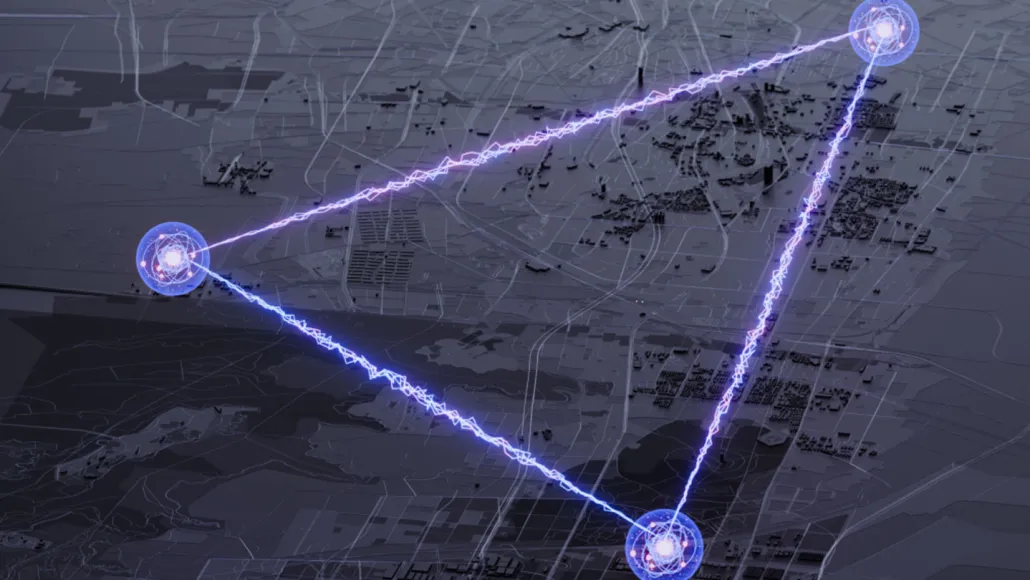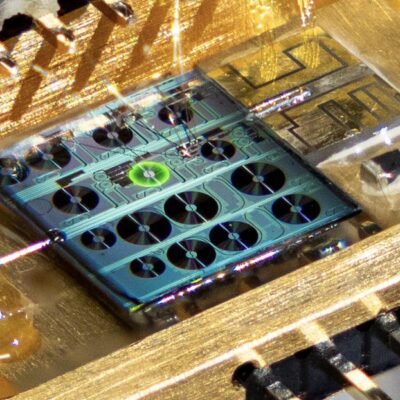Scientists are making strides in developing a quantum internet by testing quantum memories—devices that store delicate quantum information. These memories are key to establishing quantum networks that could enable ultra-secure communication and link distant quantum computers (6/28/23). By facilitating quantum entanglement across networks (2/12/20), quantum memories are critical components of this future technology.
Now, two independent research teams have successfully entangled quantum memories in city-based networks, overcoming real-world challenges posed by urban environments.
“These studies mark a significant shift from lab experiments to real-world implementations,” says physicist Benjamin Sussman of the University of Ottawa, who was not involved in the research. “These aren’t just theoretical models but the foundational steps toward future quantum networks.”
In Boston and Cambridge, Massachusetts, scientists connected two quantum memories using a 35-kilometer fiber-optic loop. The team, led by physicist Can Knaut of Harvard University, reported in the May 16 issue of Nature that they maintained entanglement for about one second. “That may not seem long, but in the quantum realm, where everything is ephemeral, one second is quite significant,” Knaut explains.
The researchers utilized quantum memories built from tiny diamond structures where two carbon atoms were replaced by a single silicon atom, creating a defect that functions as a quantum bit, or qubit. This defect acts as two qubits—one short-lived and another long-lived, which serves as the memory. Scientists excited the short-lived qubit with a photon and used it to entangle the long-lived qubit with the photon. The photon then traveled through the fiber, repeating the process to entangle the long-lived qubits within each memory.
Meanwhile, in Hefei, China, another research team achieved entanglement in a network of three quantum memories separated by 20-kilometer fiber links, as reported in the same issue of Nature.
This group’s quantum memory utilized an ensemble of rubidium atoms approximately one millimeter in diameter. When struck by a laser, the atoms emitted a photon. Instead of directly transmitting the photon to another memory, the researchers sent it to a central station, where it was measured alongside another photon from a separate memory. This process generated entanglement between two distant network nodes.
Using a central station prevented photons from needing to travel across the entire network, offering an efficiency boost. “This method is highly effective, but its practical implementation is challenging,” says experimental physicist Xiao-Hui Bao of the University of Science & Technology of China in Hefei. The team had to counteract fiber length variations caused by temperature fluctuations and other environmental factors, a process known as phase stabilization. “This is the main technological breakthrough we achieved in this study,” Bao notes.
By contrast, the Boston network operated without a central station and didn’t require phase stabilization. However, both research teams accomplished “heralded” entanglement, meaning they could confirm when entanglement had successfully formed. This feature is crucial for ensuring the reliability of quantum networks, explains physicist Wolfgang Tittel, who was not involved in either study.
“If you compare how these two groups achieved heralded entanglement, you’ll find more differences than similarities, which is exciting,” says Tittel, of the University of Geneva. “These distinct approaches each hold great promise for the future of quantum networking.”





